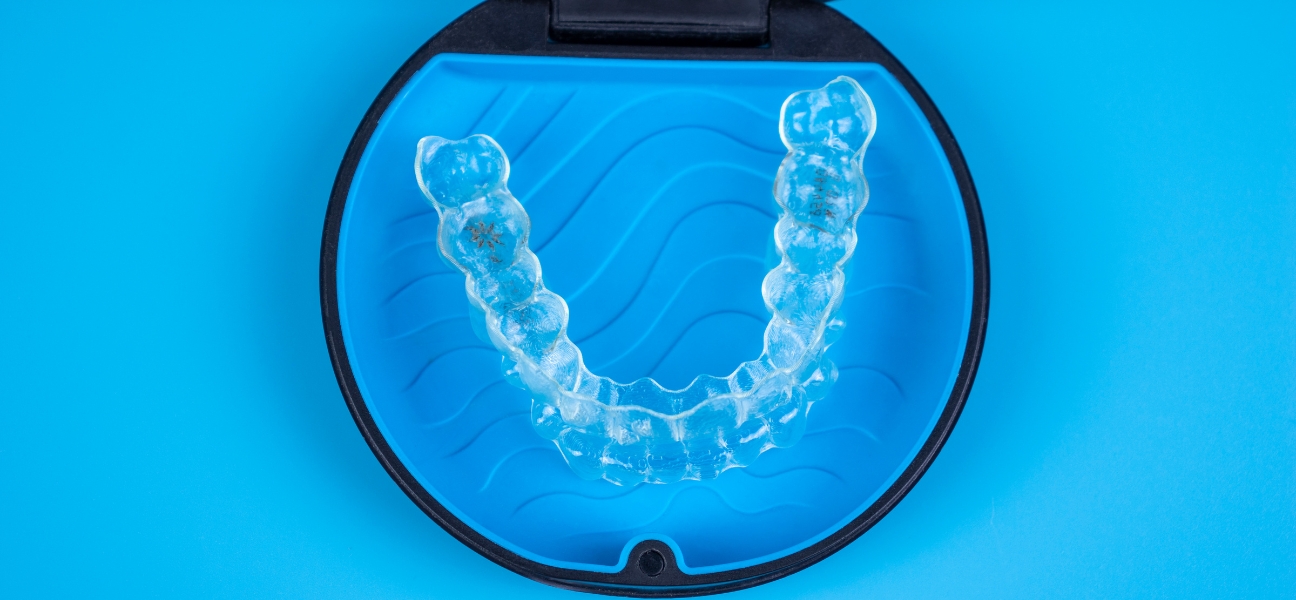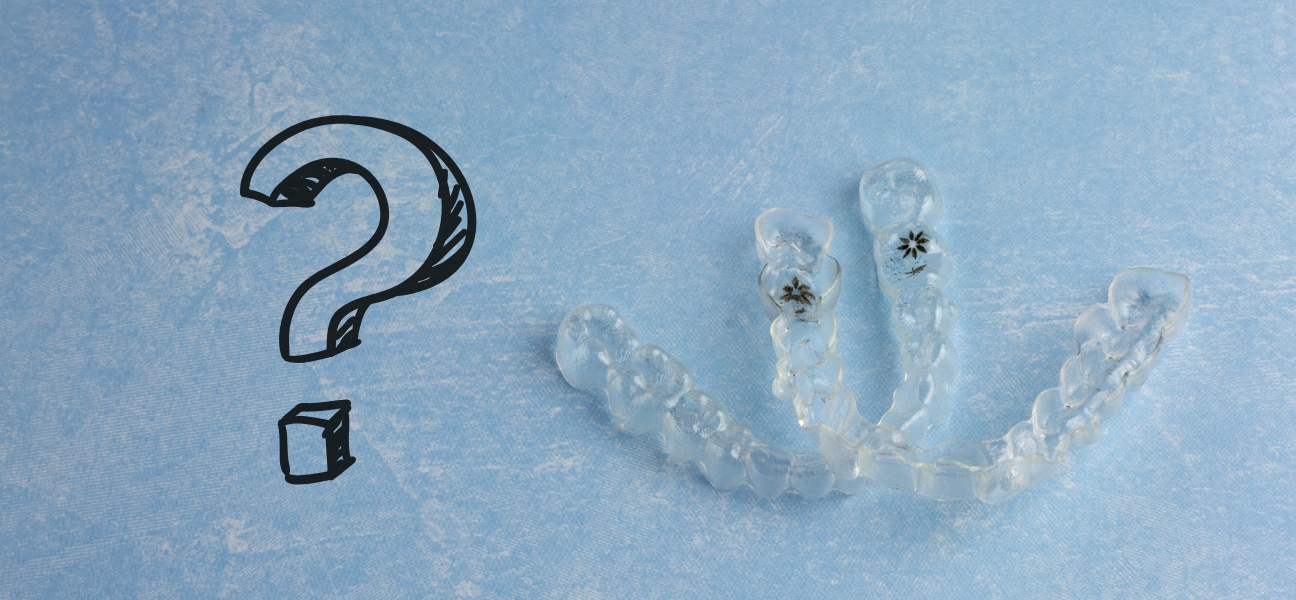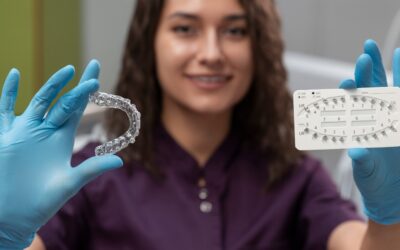Clear aligners have become a popular choice for straightening teeth without the need for traditional braces. Clear aligners gently move your teeth into the desired position using a series of nearly invisible, removable trays designed just for you. They are comfortable, discreet, and allow you to maintain your normal daily routines.
You may be wondering whether clear aligners can work for your specific dental needs. Clear aligners can address many common issues, such as crowded teeth, overbites, and gaps, making them a flexible solution for a wide range of people. If you want to learn more about how clear aligners work, what to expect during treatment, and options available, you can explore detailed reviews and treatment guides from trusted dental sources like NewMouth or Invisalign.
At Frankfort Smiles Dental, we are a Gold Provider for Invisalign and offer the same treatment options for Invisalign that you would normally see an Orthodontist for!
Key Takeaways
- Clear aligners offer a discreet way to straighten your teeth.
- They can treat many common alignment and bite issues.
- Maintaining and choosing aligners is straightforward with proper guidance.
What Are Clear Aligners for Teeth?

Clear aligners are removable, nearly invisible trays used in orthodontic treatment to move teeth into proper alignment. They have become a popular alternative to traditional metal braces due to their discreet appearance and convenience.
How Clear Aligners Work
Clear aligners use a series of custom-made, transparent plastic trays to shift your teeth gradually. Each aligner is worn for about one week, for at least 22 hours per day, before you switch to the next in the series. The trays are designed to apply gentle pressure, moving teeth a small amount with each new set.
You need to remove aligners when eating or drinking anything besides water. They require consistent use to be effective, so commitment is key. Common orthodontic issues treated by clear aligners include crowded teeth, gaps, overbites, underbites, and some mild to moderate alignment problems.
Clear aligners are best suited for cases that do not require complex tooth movements. Before starting, your dentist or orthodontist will evaluate whether your dental condition can be addressed with invisible aligners. The treatment typically involves digital scans or impressions to ensure a precise fit for your custom trays. Learn more about how clear aligners work and what they can treat.
Types of Clear Aligners
There are several types of clear aligner systems available. Popular brands include Invisalign, ClearCorrect, and other at-home aligner options. These brands differ in price, treatment supervision, and materials.
In-office systems like Invisalign involve regular check-ins with an orthodontist to monitor your progress and adjust your plan if needed. At-home aligners ship trays directly to you and usually offer remote support, but the supervision is more limited. Some aligners use slightly thicker or thinner plastics, affecting comfort and durability.
You’ll also find slight variations in the treatment process, such as how impressions are made (digital scans vs. physical molds) and how often you receive new sets. Choosing the right aligner system depends on your specific orthodontic needs, budget, and preference for in-person versus remote care.
Comparison With Traditional Braces
Clear aligners and traditional metal braces both straighten teeth, but their approaches and day-to-day impact differ. Aligners are removable, making daily oral hygiene and eating more convenient. Braces, on the other hand, are fixed on your teeth and are often more noticeable.
Traditional braces are made of metal brackets and wires, which can treat a wider range of complex orthodontic problems. They typically require more frequent in-person adjustments by an orthodontist. While clear aligners work best for mild to moderate issues, braces can manage severe misalignments and jaw corrections.
Aligners are usually more comfortable as they have no metal components that can irritate your gums or cheeks. However, the effectiveness of invisible braces depends on your commitment to wearing them as directed. You can read a detailed comparison between clear aligners and traditional braces on the American Association of Orthodontists website.
The Clear Aligner Treatment Process

Clear aligner treatment is designed to be straightforward and efficient, using advanced technology and regular oversight by dental professionals. Each stage involves specific tools and expertise to guide your teeth to their new positions and ensure a healthy, predictable outcome.
Initial Consultation and Assessment
Your journey starts with a comprehensive evaluation by an orthodontist or qualified dental professional. They examine your teeth, bite, and overall oral health to determine if clear aligners are suitable for your case. This usually includes a review of dental and medical histories and a discussion of your smile goals.
During this visit, diagnostic tools such as dental x-rays and photographs help the specialist assess underlying bone structure and teeth alignment. The practitioner explains potential treatment options and listens closely to your expectations. You’ll have the chance to ask questions about the anticipated timeline, cost, and what orthodontic care will involve.
If you’re a good candidate, you’ll proceed with the next steps, which are crucial for developing a precise and individualized treatment plan.
Digital Impressions and Aligner Fabrication
Accurate records of your teeth must be captured before aligners are made. Most clinics now use an intraoral scanner, creating a digital impression in minutes, although some may use a physical impression kit to make a traditional mold.
Digital imaging reduces discomfort and improves accuracy by producing high-resolution 3D models. The dentist or orthodontist reviews these models carefully, checking for any discrepancies or details that could affect fit. Some providers use a hybrid model, blending digital and traditional techniques for complex cases.
These digital records are sent to the aligner laboratory, where your custom aligners are fabricated using precise, clear plastic material.
Treatment Plan and Tooth Movement
A dental professional develops your customized treatment plan using advanced software that predicts tooth movement in small, controlled increments. This plan maps out which teeth need to move, how far, and in what sequence.
Aligners are manufactured in a series, each slightly different to guide your teeth step by step toward their target position. Sometimes, small attachments (tooth-colored bumps bonded to certain teeth) are placed to help the aligners grip and move teeth more efficiently.
The aligners are typically worn for 20–22 hours per day, changing to the next set every one to two weeks. You’ll receive detailed instructions and a schedule to follow throughout your orthodontic care.
Monitoring Progress and Adjustments
Monitoring throughout your treatment is important to ensure that your teeth move as planned. You’ll have in-office checkups with your orthodontist or dentist every 6–8 weeks, although some providers offer remote monitoring through photos or mobile apps.
During these appointments, your dental professional evaluates your progress and checks the fit of your current aligners. Adjustments to the treatment plan may be made if tooth movement is not tracking as expected.
If required, additional impressions or digital scans can be taken to refine the movement or fabricate refinement aligners. This ongoing oversight helps maintain an efficient, safe, and effective outcome. For more on the monitoring process, see this step-by-step guide to aligner treatment.
Who Can Benefit From Clear Aligners?

Clear aligners are popular because they provide a less visible and convenient way to straighten your teeth. Understanding which dental issues they address and who is most likely to see success can help you decide if this treatment matches your needs.
Common Bite and Alignment Issues Treated
Clear aligners are designed to target a range of alignment and bite problems. These include crowded teeth, crooked teeth, and noticeable spacing issues between teeth.
You can benefit if you have mild to moderate misalignment or need bite correction for issues such as overbite, underbite, crossbite, or open bite. Individuals dealing with these common concerns are typically candidates, as aligners gradually shift teeth into a healthier and more attractive position.
Most aligners excel at treating minor bite issues and subtle crowding, although they can also help with some more complex cases. However, extremely severe misalignments may require other orthodontic solutions. You can learn about the types of problems aligners treat at this clear aligner guide.
Ideal Candidate Criteria
Your suitability for clear aligners depends on several factors. You should have healthy teeth and gums, and a dental evaluation or imaging is often needed to confirm eligibility.
Aligners work best if you are committed to wearing them for 20-22 hours per day. Consistency in wearing your aligners is essential, as skipping wear time can result in slower or less effective results. Patients with mild to moderate crowding or spacing usually respond well to treatment.
Adults and teens without extensive dental restorations are often ideal candidates. Even specialty teen programs can accommodate some mixed dentition. To read more about candidate requirements, see this detailed overview.
Choosing and Maintaining Clear Aligners

Understanding your clear aligner options, finances, proper maintenance, and what real customers experience is key to achieving successful treatment. Your decision should be guided by features, cost transparency, aftercare, and company reliability.
Popular Clear Aligner Brands
You can choose from a range of clear aligner brands, each offering unique features and treatment settings. Well-known providers include Invisalign, Candid, AlignerCo, Byte, ClearCorrect, SureSmile, NewSmile, SmileDirectClub, and Motto. Some, like Invisalign and ClearCorrect, are offered through dental offices and require in-person visits. Others, such as Byte, AlignerCo, and SmileDirectClub, provide at-home aligner treatment options.
Nighttime aligners are available from some brands, letting you wear your aligners mostly at night. Treatment times can range from 4 to 18 months, depending on the provider and case complexity. You should verify FDA clearance and look into professional oversight when choosing. For more detailed comparisons and selection tips, visit Clear Aligners: How They Work, Brands, Pros, Cons & Costs.
Cost, Insurance, and Payment Options
Aligner treatment costs can vary widely based on the brand, length of treatment, and whether visits are in-office or remote. Invisalign is often priced from $3,000 to $8,000, while at-home brands like AlignerCo and Byte usually range from $1,000 to $2,500. Some companies, such as SmileDirectClub and Byte, offer financing plans and payment options that help make treatment more affordable.
You may be able to use dental insurance, a Health Savings Account (HSA), or a Flexible Spending Account (FSA) to cover part of the cost. Always contact your insurer for specifics about aligner coverage. When comparing brands, check if whitening kits or retainers are included or require a separate purchase.
Aftercare and Retention
Once your aligner treatment is complete, proper retention is vital to keep teeth in their new position. Most companies will provide or sell you a retainer at the end of treatment. You should wear your retainer nightly as recommended by your provider to prevent your teeth from shifting back.
Regular cleaning of your retainers helps maintain oral health and aligner longevity. It’s important to follow the hygiene recommendations provided by your brand, such as brushing your aligners with a soft toothbrush and rinsing them in lukewarm water. For more on long-term care, see how to take care of clear aligners.
Customer Experiences and Support
Customer support varies among aligner brands, and it can have a big impact on your satisfaction. Brands like Invisalign and ClearCorrect often receive positive feedback for their in-office support. At-home brands typically offer remote customer service via chat, phone, or email.
Look for brands with responsive customer service, clear policies, and accessible treatment advisors. Online reviews are useful resources for understanding what you can expect during the aligner process. It’s also wise to consider customer experiences with replacements, support during treatment, and aftercare services.
Frequently Asked Questions

Clear aligners provide a discreet and removable option for straightening teeth. They address a variety of dental issues and their cost, effectiveness, and suitability can differ based on your unique dental needs.
What is the difference between traditional braces and clear aligners?
Traditional braces use metal brackets and wires that are fixed to your teeth, which can make cleaning and eating more challenging. Clear aligners are made from smooth, transparent plastic and fit over your teeth; you can remove them to brush, floss, and eat.
Clear aligners tend to be less noticeable and offer more comfort compared to metal braces. However, braces may be recommended for more complex bite or alignment problems.
How effective are clear aligners in teeth straightening compared to other methods?
Clear aligners are effective for mild to moderate teeth crowding or spacing. In many cases, they produce results similar to metal braces for these issues.
For severe misalignment or complicated bite problems, an orthodontist may still recommend traditional braces. Consult your dental professional to find out if your condition is suitable for clear aligner therapy. More information on effectiveness is available in this detailed FAQ.
What is the typical cost range for undergoing treatment with clear aligners?
The cost for clear aligners usually ranges from $1,800 to $8,000. The price depends on the length and complexity of your treatment, the brand of aligners, and whether you see an orthodontist or choose a direct-to-consumer option.
Some dental insurance plans cover part of the cost. For more details about the cost and coverage, visit this FAQ on Reveal Clear Aligners.
How do at-home teeth straightening options compare to professional orthodontic treatments?
At-home clear aligner kits are typically less expensive and may be more convenient since you don’t need frequent office visits. However, they often lack direct supervision by an orthodontist and may not be appropriate for complex cases.
Professional orthodontic treatments involve face-to-face evaluations and ongoing supervision, which can help ensure better results and address any issues as they arise. For a professional perspective on clear aligners, visit Ora Dentistry.
Can clear aligners correct the same dental issues as traditional braces?
Clear aligners can fix many of the same problems as braces, including crowded teeth, gaps, and mild bite issues. Severe bite problems, jaw alignment concerns, or rotated teeth might still require traditional braces.
The suitability of clear aligners depends on your individual dental needs and the amount of movement required.
What factors should one consider when choosing a clear aligner brand?
You should consider the types of dental issues the brand can treat, how often you will need to wear and change aligners, the total treatment time, and whether supervision by a dental professional is included.
Cost, convenience, and customer service also play a role. Look for brands with good reviews and clear information on what the process involves, such as these FAQs from Eon Aligner.


